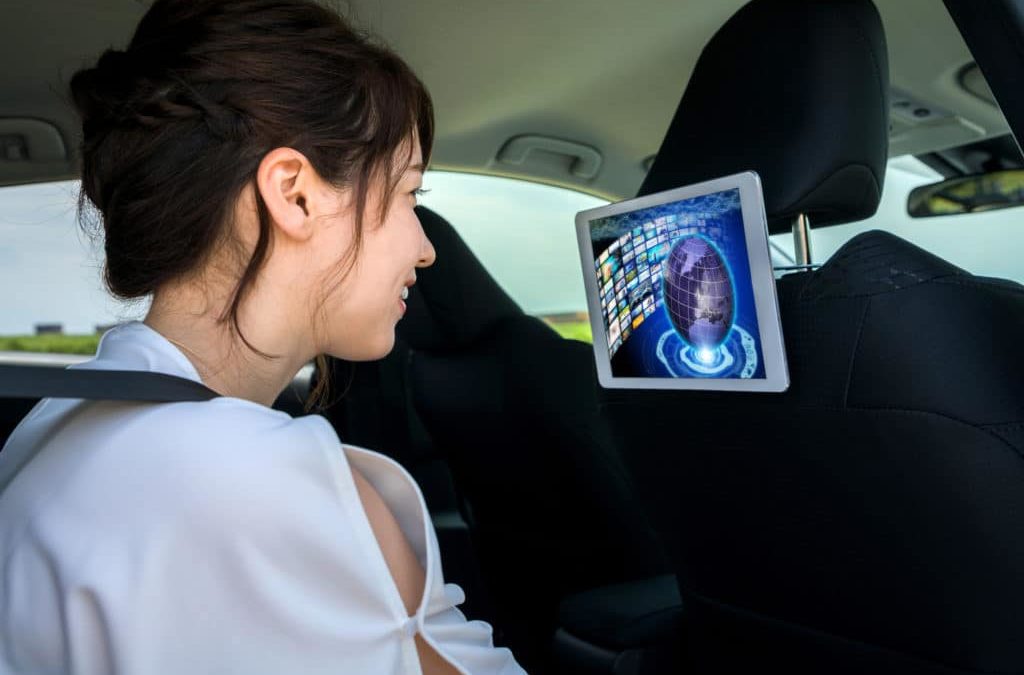Enabling everything from smart factories and self-driving cars to healthcare technologies and virtual reality, 5G promises to accelerate the evolution of the digital economy.
As AT&T’s Chris Penrose explains, 5G will jumpstart the next wave of innovation across a range of industries. Much as 4G enabled the smartphone and the gig economy, so 5G is expected to provide a cutting edge infrastructure for the next generation of data-driven services. Global telecom leaders like AT&T are laying the groundwork for autonomous vehicles (AVs) and the Internet of Things (IoT), digitizing the densely connected “smart cities” of the future. In fact, the value of the 5G ecosystem is expected to be worth a staggering $2.5 trillion by 2035.
5G’s low-latency will be fundamental to bridging vehicles, roadside units, pedestrians, and other infrastructure into a single responsive smart city ecosystem.
Evolving the smart city
Penrose knows a few things about the future of smart cities. He’s the SVP of Advanced Mobility and Enterprise Solutions at AT&T. And as he explains, the future of innovation will be fueled by high-speed mobile broadband, edge computing, artificial intelligence and machine learning, and massive IoT.
As the main platform for the Fourth Industrial Revolution, 5G’s low-latency will be fundamental to bridging vehicles, roadside units, pedestrians, and other infrastructure into a single responsive smart city ecosystem. In fact, 5G is already critical in managing the needed interoperability between AVs and their surrounding environment. And as cities become “smarter”, new 5G services will coordinate traffic, clearing the way for first responders, and improving municipal management and governance.
Cities are already implementing Intelligent Transportation Solutions (ITS) and these solutions will only become more intelligent with the proliferation of data-driven services. 5G will drive video intelligence and intelligent lighting sensors to provide up-to-date information on traffic conditions, improving parking availability and congestion pricing.
AT&T has already collaborated with industry partners to improve safety and traffic efficiency. “We’re working with industry leaders like Ford, Nokia and Qualcomm on V2X proofs of concept and trials,” says Penrose. V2X (vehicle-to-everything) communications are expected to assist driverless vehicles in making real-time decisions based on information onboard the vehicle itself, as well as information from surrounding vehicles and intelligent transportation systems.
A living room on wheels

One key challenge with AVs is the issue of car ownership. Forecasts suggest that there could be as many as 21 million driverless cars in the United States and 27 million in Europe over the next decade. By 2050, the AV industry could be worth a staggering $7 trillion.
Penrose suggests that fully autonomous vehicles will transform the way we think about mobility, both in terms of smart commuting and transportation-as-a-service. Even as the transition to AVs remains years away, the popularity of ride-sharing services already hints at things to come. Given this shift, Penrose predicts that fully autonomous vehicles will mean new opportunities for in-vehicle entertainment and engagement for passengers including video streaming, gaming, and software applications.
AT&T expects to bring together premium video content, along with a full suite of office productivity solutions that build on the company’s large base of enterprise and consumer relationships. Expanding connectivity and the proliferation of 5G networks will allow AVs to become a vast platform for drivers and passengers to consume greater amounts of media content. AVs will accelerate media consumption, providing a “living room on wheels”. As the proliferation of digital tools increases productivity, we should see the office becoming increasingly mobile as well.
Collaborate to innovate

According to Penrose, AT&T has begun working with Nokia’s Worldwide IoT Network Grid (WING) to bring enterprise customers the benefits of next-generation connectivity. This includes a wide range of IoT services across transportation, healthcare, manufacturing, retail, agriculture, utilities, consumer electronics and smart cities.
AT&T has also launched the first manufacturing-focused 5G Innovation Zone in America with Samsung Austin Semiconductor and Samsung Networks. And collaborating with Uber’s Elevate air mobility unit, AT&T is now exploring how LTE and eventually 5G connectivity can support aerial ridesharing and cargo delivery with enhanced safety and reliability.
5G-driven smart cities are becoming a very real part of the global economy. This has important implications for how we think about the future of data-driven innovation. It took 50 years for electricity to be adopted by 60 percent of households in the United States and only 10 years for cell phones. The adoption of 5G driven technologies will be much faster.
Penrose predicts 5G will unlock IoT services including remote surgery, live video streaming by drone, and autonomous driving fleets for commercial transportation. As market intelligence firm IDC predicts, there will be more than 40 billion connected devices around the world by 2025. Welcome to the Fourth Industrial Revolution.


Recent Comments